
Traditional Marketing vs. Digital Marketing - Suffari
Marketing has always been a crucial aspect of any business, but with the rise of technology, the methods of marketing have evolved significantly. Traditional marketing, which includes methods like television, print, and radio advertisements, has been the go-to for businesses for many years. However, with the advent of the digital age, digital marketing has become increasingly popular due to its speed, cost-effectiveness, and wider reach. In this article, we will compare and contrast traditional marketing with digital marketing, highlighting their main differences and benefits to help business owners make informed decisions when it comes to their marketing strategies. And if you do choose digital marketing services, sign up for a free digital marketing consultation with Suffari today.
Traditional Marketing vs. Digital Marketing - Suffari
What is Traditional Marketing?
Differences between Digital Marketing and Traditional Marketing
Why Choose Traditional Marketing?
What is Traditional Marketing?
When it comes to traditional marketing, it encompasses the conventional methods that have been prevalent for decades to reach a target audience. This can include various offline strategies such as print advertisements, billboards, flyers, and television and radio commercials. One of the defining characteristics of traditional marketing is its historical prevalence, having been the primary form of marketing and advertising for the better part of the 20th century. These methods are well-established and familiar to the general public, and many of us are exposed to traditional marketing tactics on a daily basis, from the newspaper we read in the morning to the billboards we pass during our commute.
Another hallmark of traditional marketing is its widespread usage in a multitude of industries and by businesses of all sizes. Whether it's a local car dealership advertising on the radio or a multinational corporation running a television commercial during a major sports event, traditional marketing has been a ubiquitous presence across different scales of business operations. The impact and effectiveness of traditional marketing have been well-documented over the years, and many companies continue to allocate a significant portion of their marketing budget to these established and proven methods.
When we consider the forms of traditional marketing, it's important to recognize the direct and one-way communication it often entails. For instance, television commercials, print advertisements, and even direct mail campaigns are designed to deliver a message to the target audience without the immediate opportunity for interaction or engagement. While these methods have been instrumental in the success of countless marketing campaigns, the evolving landscape of consumer behavior and technology has prompted a notable shift in the marketing industry.
What is Digital Marketing?
In stark contrast to traditional marketing, digital marketing refers to the modern and innovative methods of promoting and advertising products and services using various digital channels and online platforms. This can encompass a wide range of strategies, including content marketing, social media marketing, email newsletters, search engine optimization (SEO), and pay-per-click (PPC) advertising, among others. The hallmark of digital marketing is its dynamic and adaptive nature, constantly evolving in response to changes in consumer behavior, technology, and online trends.
The cultivation of a strong online presence has become an indispensable aspect of business success in the digital age, making digital marketing an essential and strategic component of any comprehensive marketing plan. With the vast and ever-expanding reach of the internet, businesses have unprecedented opportunities to engage with their target audience, promote their products and services, and build brand awareness on a global scale. The interactive and multi-faceted nature of digital marketing allows for a two-way communication between businesses and consumers, enabling the audience to actively engage with the content and the brand, leading to a more personalized and impactful experience.
As the digital landscape continues to advance, the tools and techniques available for digital marketing have become increasingly sophisticated and diverse. From the precision of target-specific advertising to the in-depth analysis of consumer data and behavior, digital marketing offers a wealth of resources and capabilities designed to help businesses optimize their marketing strategies, reach new heights of success, and effectively compete in the online sand.

Differences between Digital Marketing and Traditional Marketing
When comparing traditional marketing with digital marketing, one of the fundamental differences lies in the distinct mediums and channels through which these two methods operate. Traditional marketing, as previously discussed, relies on established offline channels such as television, radio, and print media, while digital marketing leverages a vast and diverse array of online platforms, including social media, search engines, email, and websites. This dichotomy in the medium used for promotion underpins many of the key differentiating factors between the two approaches, from the nature of audience reach to the level of interactivity and engagement.
Another significant difference between traditional marketing and digital marketing is the manner in which they each facilitate the measurement and analysis of the effectiveness of marketing campaigns. In traditional marketing, the assessment of a campaign's impact often involves more generalized and indirect metrics, such as estimated viewership or circulation numbers. Digital marketing, on the other hand, offers a wealth of detailed and real-time data that empowers businesses to track and analyze the performance of their marketing efforts with remarkable precision. This can include metrics such as website traffic, conversion rates, social media engagement, and the geographic and demographic composition of the audience, providing invaluable insights for strategic decision-making and ongoing campaign optimization.
Furthermore, the longevity and temporal scope of marketing content and campaigns differ significantly between traditional and digital marketing. In the traditional landscape, marketing materials such as television commercials, print ads, and billboards are often characterized by their predetermined and limited airtime or display period. In contrast, digital marketing content can have a substantially longer and enduring presence, with the potential for continuous visibility and engagement over an extended period. This distinction is further accentuated by the flexibility and adaptability of digital content, which can be readily updated, repurposed, and shared across various online channels with ease and efficiency.
Cost
As we delve into the practical considerations of marketing, the cost implications of traditional marketing and digital marketing represent a pivotal point of differentiation. Traditional marketing, with its reliance on mediums such as television advertising and print publications, has historically been associated with significant financial investment, often requiring a substantial portion of a company's overall marketing budget. The production and dissemination of television commercials, radio ads, or large-scale print campaigns can entail high expenses, and securing prime ad placements during peak viewership or circulation periods may further escalate the cost of traditional marketing initiatives.
Digital marketing, in contrast, offers a diverse range of cost-effective and sometimes free-of-charge opportunities for promoting products and engaging with the target audience. While certain forms of digital advertising, such as pay-per-click (PPC) campaigns, may involve specific costs, many digital marketing channels, including social media, content marketing, and organic search engine optimization (SEO), offer the potential for a considerably wider reach and impactful engagement at a fraction of the cost associated with traditional marketing methods. This financial accessibility and flexibility have rendered digital marketing particularly appealing to businesses operating within constrained budgetary frameworks and seeking to maximize the efficiency and cost-effectiveness of their marketing endeavors.
Audience Reach
One of the most striking advantages of digital marketing lies in its unparalleled potential for audience reach and the ability to connect with a global or highly specific demographic. Through the expansive and pervasive nature of the internet, digital marketing enables businesses to transcend geographical boundaries and access an extensive and diverse audience, irrespective of their location or time zone. This far-reaching capability is further complemented by the tools and techniques available within digital marketing, which empower businesses to tailor their strategies and content with remarkable precision to resonate with and appeal to distinct segments of the population, thereby fostering a heightened level of resonance and connection with the target audience.
While traditional marketing methods have historically excelled in targeting local and geographically concentrated audiences, the emergence of digital marketing has expanded the horizons of audience reach and accessibility to an unprecedented degree. Online platforms and tools, such as social media advertising, local search optimization, and geotargeting, equip businesses with the means to not only engage with a global audience but also to effectively home in on and resonate with specific demographic, behavioral, and psychographic profiles within their target market. This versatility and adaptability in audience targeting and reach have established digital marketing as a form of marketing that is uniquely poised to address a diverse array of business objectives and to accommodate the distinctive needs and scope of various products, services, and brands.
Measurement
The realm of measurement and performance evaluation represents a pivotal domain in which digital marketing distinguishes itself prominently from traditional marketing. With its extensive array of data analytics tools, platforms, and metrics, digital marketing furnishes businesses with an unprecedented capacity to meticulously track, assess, and understand the intricate nuances of their marketing performance and the dynamics of audience interaction and behavior. From the quantification of website traffic and user engagement to the attribution of conversions and the analysis of campaign ROI, digital marketing engenders a sophisticated and multifaceted approach to performance measurement that underpins strategic decision-making and the iterative refinement of marketing tactics and initiatives.
Contrastingly, traditional marketing methods have historically been associated with a more conjectural and less granular framework for evaluating the impact and efficacy of marketing campaigns. The assessment of traditional marketing efforts often entails an approximation of audience reach and reception through metrics such as circulation numbers, viewership ratings, or survey data, which may not consistently align with the current dynamics of audience response and engagement. The discerning and often real-time insights provided by digital marketing metrics offer businesses an invaluable vantage point from which to ascertain the tangible impact of their marketing efforts, identify areas for improvement, and strategically allocate their resources to optimize the performance and returns of their marketing investments.
Interactivity
Another pivotal distinction between traditional marketing and digital marketing is encapsulated by the contrasting levels of interactivity and engagement that they afford to businesses and their target audience. Traditional marketing, characterized by its historical reliance on one-way communication channels such as television commercials and print advertisements, has traditionally fostered a more passive and observational dynamic between businesses and consumers, with limited scope for immediate or sustained interaction and dialogue. While these traditional channels have historically proven effective in conveying brand messaging and shaping consumer perceptions, the evolution of consumer preferences and the digital landscape has precipitated a pronounced demand for more interactive and participatory modes of engagement.
Enter digital marketing, with its expansive repertoire of interactive tools, social media platforms, and dynamic content formats that collectively engender a rich and immersive landscape for businesses to actively engage with their audience and cultivate personalized and meaningful interactions. Whether through the facilitation of engaging social media posts, live chat support functions, interactive website features, or immersive multimedia content, digital marketing empowers businesses to forge deeper and more resonant connections with their audience, instill a sense of co-creation and community, and foster an environment of dialogue, feedback, and ongoing engagement that transcends the confines of traditional one-way communication.
Longevity
One of the notable aspects that sets traditional marketing apart from digital marketing is the dimension of longevity and temporal persistence inherent in the promotional content and campaigns associated with each method. In the realm of traditional marketing, the lifecycle and visibility of marketing materials such as television commercials, print advertisements, and billboards are often circumscribed by predefined and finite time frames, with the exposure and dissemination of these materials contingent upon the duration of their allotted airtime. or display. This conveys a sense of transient and time-bound presence to traditional marketing content, with limited opportunities for prolonged or recurrent visibility beyond the confines of the predetermined broadcasting or circulation schedules.
Digital marketing, by virtue of its online and perpetually accessible nature, affords a substantially greater degree of longevity and enduring presence to the promotional content and assets deployed within its purview. The digital ecosystem, characterized by the continuous and unrestricted availability of online content across websites, social media platforms, and search engine results, enables businesses to sustain the visibility and accessibility of their marketing materials over protracted periods, with the potential for evergreen and persistent engagement with their target audience. Furthermore, the flexibility and agility inherent in digital content empower businesses to adapt, update, and repurpose their marketing assets with ease, imbuing them with a dynamic and adaptive longevity that transcends the constraints of traditional temporal boundaries.

Choosing the Right Method
Given the manifold and nuanced differentiations between traditional marketing and digital marketing, the strategic selection of the right method or a harmonious integration of both approaches assumes a pivotal significance in the formulation and execution of a robust and effective marketing strategy. The optimal choice between traditional marketing and digital marketing is contingent upon a diversified array of factors, including the nature of the target audience, the specific objectives of the marketing campaign, the available budget and resources, and the overarching brand identity and positioning of the business .
In instances where businesses seek to engender widespread brand awareness, attain a broad and diverse audience, or leverage the historical prominence and resonance of established offline channels, traditional marketing may represent a compelling and complementary component of the marketing strategy. Conversely, when the aim is to cultivate a dynamic and pervasive online presence, harness the interactive and data-informed tools and techniques of the digital landscape, and establish a direct and personalized rapport with a digitally entrenched target audience, digital marketing emerges as an instrumental and often primary driver of marketing success.
Furthermore, the delineation between traditional marketing and digital marketing is not simply a dichotomous one, and businesses are increasingly recognizing the synergistic potential of integrating elements from both paradigms to form a comprehensive and harmonized marketing approach. By fusing the enduring reach and credibility of traditional marketing with the dynamic engagement and measurability of digital marketing, businesses can orchestrate a cohesive and resonant brand narrative that reverberates across diverse channels and resonates with a heterogeneous and multifaceted target audience, thereby maximizing the impact and efficacy of their marketing initiatives and investments.
Why Choose Traditional Marketing?
Leveraging time-tested and conventional methods to disseminate brand messaging, traditional marketing represents the historical bedrock of promotional strategies, having comprised the predominant and pervasive form of marketing for many decades. From television and radio commercials to print advertisements and direct mail campaigns, the scope of traditional marketing encapsulates a diverse array of offline channels and mediums that have collectively shaped our interactions with promotional content and brand messaging in the physical and analog domain.
Embarking upon a traditional marketing campaign entails navigating a terrain characterized by the established prominence of offline channels, the distinct and at times unidirectional nature of communication, and a pervasive and time-honored legacy that has etched the imprint of traditional marketing into the fabric of consumer culture and commercial practices. While the advent of digital marketing has precipitated a notable transformation in the contemporary marketing landscape, traditional marketing continues to exude a reservoir of influence, resonance, and strategic relevance across varied industries and demographic segments.
As the conduit through which many of our enduring and indelible impressions of brand messaging and advertising have been forged, traditional marketing venerates a heritage of iconic campaigns, legendary slogans, and timeless visual imprints that have permeated the collective consciousness and cultural tapestry. The enduring and at times nostalgic allure of traditional marketing, interwoven with its historical aura and the tangible and tactile tangibility of its promotional materials, bestows upon it a distinct and invaluable eminence within the broader constellation of marketing methodologies and strategic pursuits.
Why Choose Digital Marketing?
Embodied by the boundless expanses and dynamic frontiers of the online realm, digital marketing represents a paradigm shift and a transformative evolution in the domain of marketing and promotional strategies, catalyzed by the ascendancy of the internet and the proliferation of digital technologies. From the strategic orchestration of search engine optimization (SEO) and the astute curation of content marketing initiatives to the pervasive dissemination of brand messaging across the multifaceted tapestry of social media platforms, digital marketing constitutes a versatile, adaptive, and indelibly interconnected tapestry of online channels and engagement touchpoints.
The essence of digital marketing is encapsulated by its far-reaching and immersive integration within the contours of our online experiences, threading a confluence of informational, transactional, and interactive elements through the sinews of websites, search results, social media feeds, and digital communications . The crux of digital marketing unfolds in the capacity to forge direct, personalized, and resonant connections with a discerning and digitally empowered audience, harnessing the agile and data-informed tools and techniques that underpin the meticulous orchestration and optimization of online marketing strategies and campaigns.
Key Differences Between Traditional and Digital Marketing
Within the dichotomous terrain of traditional marketing and digital marketing, an intricate web of variegated distinctions and pronounced disparities unfurls, delineating the contrasting contours, methodologies, and strategic underpinnings that undergird each paradigm. From the divergent mediums and channels instrumentalized for the dissemination of promotional content to the contrasting aptitudes for audience targeting, engagement, and measurement, traditional marketing and digital marketing emerge as complementary, yet distinctly absurd, archetypes that collectively manifest the kaleidoscopic spectrum of strategic possibilities and tactical pursuits within the overarching purview of marketing and brand stewardship.
Furthermore, the evolution of the marketing industry has precipitated a vigorous and symbiotic entwining of traditional and digital marketing, engendering a harmonious and resonant interplay that crystallizes in holistic and hybridized marketing strategies. By adroitly interlacing the venerable imprints of traditional marketing with the dynamic, data-informed astuteness of digital marketing, businesses can navigate a capacious and interconnected expanse of promotional and brand elevation endeavors, fusing the enduring resonance and credibility of the former with the agile precision and strategic discernment of the latter to orchestrate a holistic and resonant symphony of marketing success and consumer resonance.
Amidst the variegated clarion calls and resonant cadences that animate the continuum of marketing and brand elevation, the equipoise between traditional and digital marketing emerges as a pivotal fulcrum where upon the trajectories of inimitable business pursuits and strategic narrative concepts converge. Engendering a poignant and resonant accord between the storied legacies of traditional marketing and the dynamic, adaptive poise of digital marketing, businesses seminate a strategic resonance that ripples across the expansive compass of consumer consciousness, fostering a symphony of brand narratives that resonate with the collective clarion call of resonant consumer expressions and indelible brand impressions.

Conclusion
In today's technology-driven world, businesses must adapt and utilize different marketing methods to effectively promote their products and services. Traditional marketing and digital marketing are two popular approaches, each with their own advantages and disadvantages. While traditional marketing relies on traditional mediums such as television, print, and radio, digital marketing uses online platforms and channels. The main difference lies in the medium used, but the impact and results can vary significantly. In conclusion, understanding the differences between traditional and digital marketing is crucial for businesses looking to reach their target audience and increase their online presence. If you're a business owner in need of web design, website management, and digital marketing services, consider partnering with Suffari. Our monthly website management service includes a free custom website design and over 100 digital marketing services to help your business thrive in the digital world.





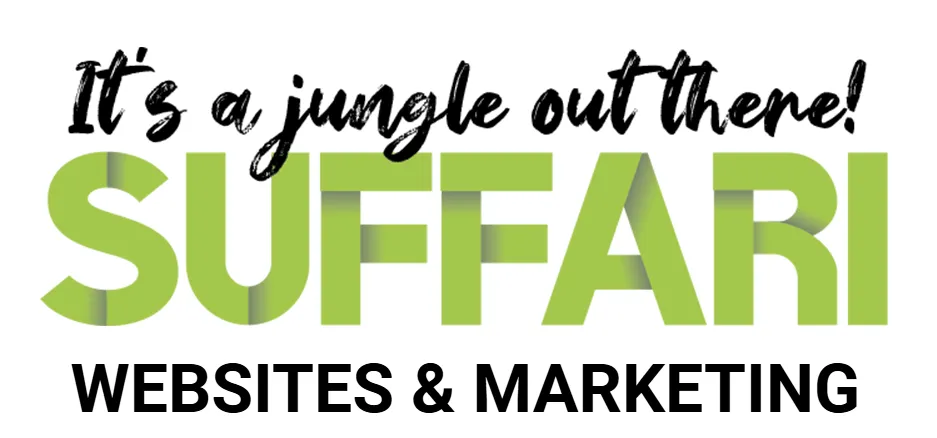




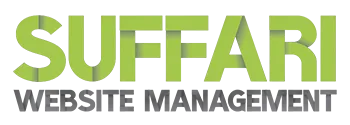

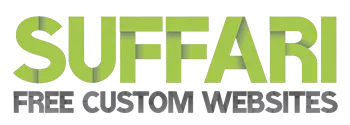


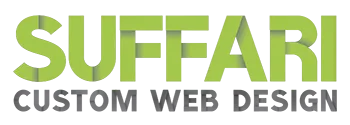
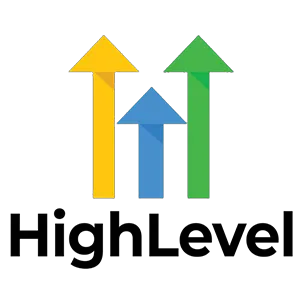

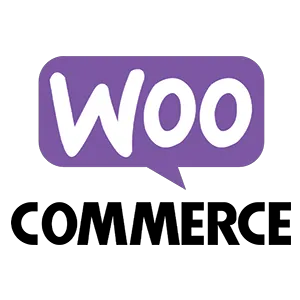


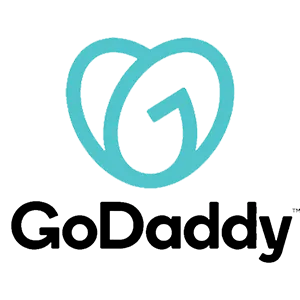

Youtube